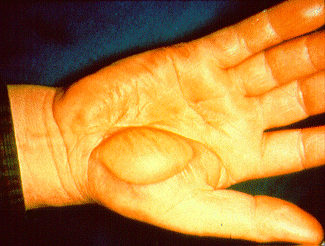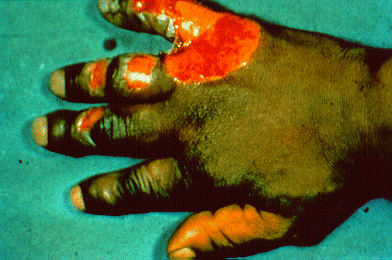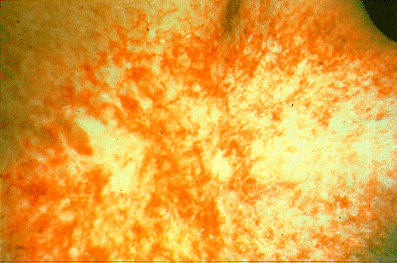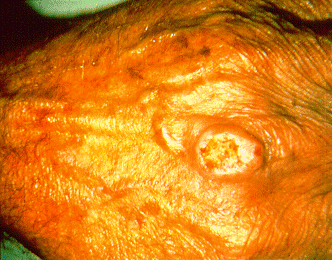Occupational Dermatoses
NOTE: This page is archived for historical purposes and is no longer being maintained or updated.
Slides 66 to 70
Slide 66 - Electrical burn

Electrical burns may show erythema and bullae from the heat of arcing current or may be non-descript with severe internal damage between the points of contact and exit of the current.
Slide 67 - Frostbite

Frostbite, especially of the extremities, can be severe, with destruction of the skin and deeper tissues. Degrees of injury are graded according to the depth of tissue damage, similar to thermal burns.
Slide 68 - Immersion foot

Macerated skin of immersion foot, common among troops in Viet Nam, is also seen among workers wearing water soaked boots for extended periods of time. This variety of immersion foot caused by a species of Corynebacterium produces pitted keratolysis.
Slide 69 - Radiodermatitis

Numerous sources of ionizing radiation are encountered in industry. Gamma radiation and x-rays produce acute and chronic radiodermatitis as well as radiation sickness. Typical sequelae of radiation include atrophy, depigmentation, hyperpigmentation and telagiectasia - all visible here.
Slide 70 - Squamous cell epithelioma

Squamous cell skin cancer and basal cell skin cancers are common complications of chronic radiodermatitis. Occupations at risk include dentists, industrial radiographers, and x-ray diffraction technicians. These same tumors result from long term solar radiation.
- Page last reviewed: January 5, 1998 (archived document)
- Content source:
- National Institute for Occupational Safety and Health Health Effects Laboratory Division (HELD)


 ShareCompartir
ShareCompartir